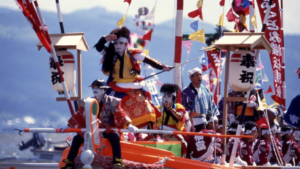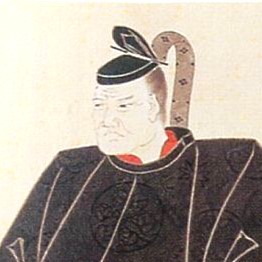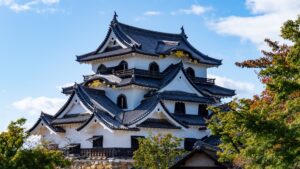Ichijo-dani Asakura Clan Ruins
Nestled in the quiet mountains of eastern Fukui Prefecture lies Ichijo-dani. This castle town served as the political and cultural center of the Asakura clan, who ruled the Echizen Province (present-day Fukui Prefecture) for five generations over a span of 103 years during the Warring States period. Asakura Sōteki (1477–1555, 朝倉宗滴), a wise and strategic […]
Ueda Castle: The Fortress That Repelled the Tokugawa Army Twice
In the turbulent age of the Warring States period, when warlords vied for supremacy, a genius strategist, Sanada Masayuki, who rose from the rank of an ashigaru commander to warlord, built the formidable Ueda Castle, renowned for repelling the overwhelming armies of Tokugawa not once, but twice. Masayuki was described by the unifier of the […]
Oda Nobunaga's Gifu Castle: After Countless Battles, the Dawn of Tenka Fubu
Oda Nobunaga's Gifu Castle: After Countless Battles, the Dawn of Tenka Fubu
Matsusaka Castle: The Legacy of Martial, Scholarly, and Economic Talent of Gamo Ujisato
Gamo Ujisato (1556-1595, 蒲生氏郷) was a military commander of remarkable skill, both in martial arts and scholarship, who won the admiration of Oda Nobunaga (1534-1582, 織田信長) and Toyotomi Hideyoshi (1537–1598, 豊臣秀吉), during the Warring States period (1467-1573). Known not only for his military expertise, Ujisato also excelled in economic policy and was celebrated as a […]
Matsue Castle, Festival, and Tea Culture by Two Great Matsue Lords
Amid the chants of Horan Enya, around 100 boats, adorned with performers wearing colorfu,l splendid costumes, sail through rivers between Lake Shinji and Nakaumi Lagoon in Matsue, the capital of Shimane prefecture. The Horan-Enya Festival is one of three major Shinto boat rituals in Japan, alongside the Tenjin Festival of Osaka Tenmangu Shrine and the […]
Hamamatsu Castle, Ieyasu's Journey of Building a Peaceful Era
Tokugawa Ieyasu (1543-1616, 徳川家康) was freed from his hostage of Imagawa Yoshimoto (1519-1560, 今川義元) defeated at the Battle of Okehazama, and took a step forward as the lord of Okazaki Castle. He put down the Mikawa Ikki riot and brought stability to the Mikawa region in 1645. Following the surrender of the Imagawa clan's Sunpu […]
Okazaki Castle, Hardship Made the Man: Tokugawa Ieyasu
Tokugawa Ieyasu (1543-1616, 徳川家康) was separated from his mother at the age of 3, became a hostage of Oda Nobuhide, father of Oda Nobunaga (1534-1582, 織田信長) at the age of 6, lost his father at the age of 8, then became a hostage of the Imagawa Yoshimoto (1519-1560, 今川義元). In total, he spent about 14 years […]
Nagoya of Art and Culture, Tokugawa Yoshinao's Achievement
Within the Honmaru Palace of Nagoya Castle, esteemed artists of the Kano school, including Kano Tanyu (1602-1674, 狩野探幽), painted the finest sliding door paintings of tigers, pine trees, and other motifs. The 1,049 sliding door paintings survived the war and were completely restored and copied. These invaluable treasures continue to be precious gems that convey […]
Sakuradamon Gate of Edo Castle ruins with beautiful cherry blossoms: Ii Naosuke lost his life
The stunning sight of cherry blossoms in full bloom reflecting on the water of Chidorigafuchi moat of the former Edo Castle, now the Imperial Palace, is breathtaking. Its beauty leads to the Sakuradamon gate, where a startling event occurred under a cold sky with heavy snowfall in 1860 for the Tokugawa Shogunate. Ii Naosuke (1815-1860; […]
Hikone Castle, The life of Ii Naomasa, a Brave Warrior with Strong Diplomatic Skills
Hikone Castle, situated atop Mount Kinko along the shore of Lake Biwa, retains its stunning three-story structure, adorned with its white stucco exterior walls as it was in the past. The castle tower, a national treasure, showcases an elegant and rhythmical architectural style adorned with three types of gables: Kirizuma, Kara-hafu, and Iriomoya. Adding to […]










